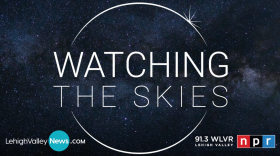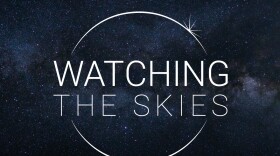
Brad Klein
Morning Edition HostI was a founding member of the WLVR News team in 2019, bringing more than 20 years of experience in radio journalism, podcast, and video production. I’ve had a role in a number of long-running programs at NPR, MSNBC and WNYC. A founding producer of NPR’s “Talk of the Nation: Science Friday,” I played similar start-up roles for NPR’s Weekly Edition, MSNBC’s Edgewise, Public Radio International’s Satellite Sisters and even as a writer on one of the early pilot episodes of the news/comedy show, Wait Wait Don’t Tell Me. I’ve also worked as a reporter, producer, and director for National Public Radio News programs including Weekend Edition and All Things Considered. An avid naturalist, I lead educational programs for the American Museum of Natural History and Brooklyn Botanical Garden. Contact me at bklein@wlvrnews.org or 610-984-8140.
-
This week on Watching the Skies, learn how to spot several stars and bright celestial objects in the sky like Mars and Jupiter.
-
This week, a preview of confirmation hearings scheduled for Wednesday to confirm a new head for NASA. The nominee is well known to the Lehigh Valley.
-
This week, how to spot the first traces of the young crescent moon that marks the end of the Islamic holy month of Ramadan.
-
Light pollution has made seeing the Milky Way galaxy difficult, unless you're in a state park in north-central Pennsylvania that's a three-and-a-half-hour drive from the Lehigh Valley.
-
The spring equinox is right around the corner — this week to be exact. This week, Brad Klein and Marty McGuire talk about the upcoming celestial event.
-
Two bald eagles that shared a nest for years at Saucon Park in Bethlehem captured attention after the female bird died of bird flu last month. Now, the surviving male apparently has found a new mate.
-
This week, a surprise twist on the total lunar eclipse visible from the Lehigh Valley in the early morning hours of Friday, March 14th.
-
Brad Klein and Marty McGuire look at the eight planets in our solar system, and discuss what it takes to see them in the night sky.
-
This week, Brad Klein and Marty McGuire take a look at the lunar phenomenon known as ‘earthshine.’
-
This week, a look at a NASA mission that is on the way to a moon landing, but very different from the Apollo missions a half century ago.



